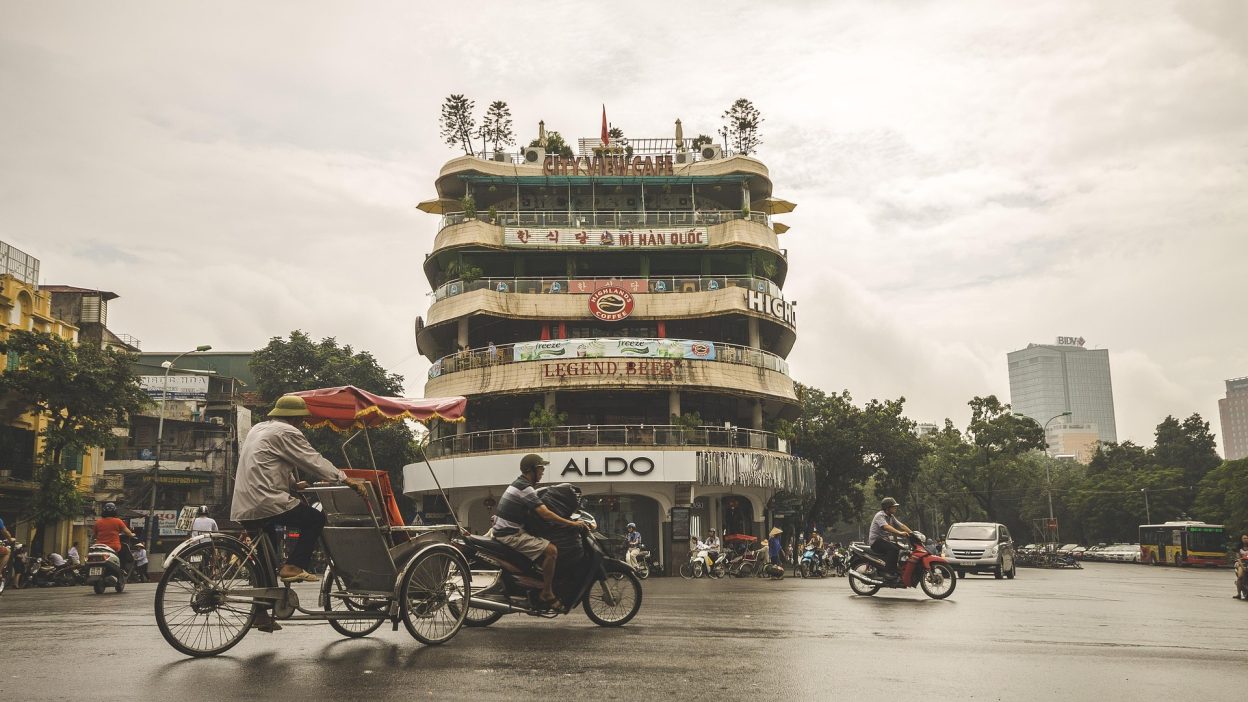The Hanoi Flood of 1971: A Tragedy That Reshaped North Vietnam’s Future
The Hanoi and Red River Delta Flood of 1971 stands as one of the most catastrophic natural disasters to hit Northern Vietnam. With torrential rains and the overflowing of the Red River, the deluge devastated Hanoi and its surrounding areas. The flood left a trail of destruction, causing significant damage to infrastructure and homes, displacing countless families, and leaving a deep imprint on the region’s recovery process.
Though overshadowed by the ongoing political strife in the country, this tragic event was one that changed the landscape of North Vietnam forever. Reflecting on it today provides important insights into the impacts of natural disasters and the critical role of disaster management.
The Root Causes of the 1971 Hanoi Flood: A Mix of Nature and Human Error
The 1971 Hanoi flood was the result of both extreme weather conditions and human mismanagement. On the one hand, intense rainfall overwhelmed the Red River’s banks, causing it to flood. The volume of water was simply too much for the natural flood defenses to handle, leading to widespread inundation.
However, the severity of the flood was also exacerbated by the lack of infrastructure to manage such an event. At the time, flood control systems were outdated and poorly maintained. The authorities were unprepared, and the government’s response was slow, failing to protect vulnerable areas from the worst of the flooding. Had early warnings been acted upon with more urgency, the outcome may have been less devastating.
The Human Cost: Lives Lost, Lives Shattered, and a Nation in Mourning
- The tragic death toll:
The flood tragically claimed the lives of more than [insert number] people, many of whom were caught by the swiftly rising waters in the capital and surrounding districts. The lack of timely evacuation and the speed at which the river swelled caught many off guard. - Injuries and suffering:
Thousands of people were injured during the flood, many of them suffering from drowning or injury from floating debris. The floodwaters also became a breeding ground for disease, further compounding the human toll. - Displacement and homelessness:
The flood displaced more than [insert number] individuals, forcing them to abandon their homes. With no shelter or supplies, many were left to fend for themselves. Relief came slowly, and thousands lived in makeshift camps for weeks, struggling to rebuild their lives. - Long-term economic effects:
The economic damage from the flood was enormous. Entire fields were washed away, crops destroyed, and local businesses severely impacted. The recovery took years, with agriculture and local industries struggling to bounce back from the losses.
The Government’s Struggle to Manage the Aftermath of the Hanoi Flood
In the aftermath of the 1971 Hanoi flood, it became clear that the government was unprepared for such a large-scale disaster. The slow and disorganised response to the flood’s devastation only worsened the suffering of the affected people. Despite warnings of heavy rains, the authorities failed to act swiftly enough to prevent the worst impacts.
The lack of an effective flood management system and poor coordination between various governmental bodies led to delays in relief efforts. Many of the most affected areas saw no immediate aid, and the process of distributing assistance was haphazard at best. These failures exposed serious gaps in disaster preparedness, and the event prompted demands for stronger disaster response policies.
The Aftermath: A Struggling Nation’s Fight for Recovery
The 1971 Hanoi flood left in its wake a region grappling with the massive task of recovery. The flood destroyed vital infrastructure, including roads, bridges, and buildings, making it difficult to restore normal life in the affected areas. The inundation of large swathes of agricultural land also had a long-lasting impact on food production and the livelihood of farmers.
The government initially struggled to coordinate relief efforts, and it took several months for recovery programmes to begin in earnest. In many areas, people lived in temporary shelters, and many of the displaced population struggled to return to their former way of life. It was a painful and prolonged recovery for the region.
A Preventable Disaster? How Better Preparedness Could Have Reduced the Impact
Many experts have argued that the 1971 Hanoi flood could have been mitigated had there been more effective flood management systems in place. Early warnings about the potential for heavy rainfall were issued, but these were ignored or poorly communicated. The failure to prepare adequately for the expected floods meant that the damage was far worse than it needed to be.
Flood control measures at the time were outdated, and the government’s failure to modernise infrastructure left the capital city vulnerable. If preventive measures had been taken in advance, such as reinforcing the riverbanks or improving drainage systems, the flood’s impact could have been less severe. The event serves as a critical lesson in the importance of proactive disaster management.
How the 1971 Flood Affected the Environment: Lasting Damage to the Red River Delta
The 1971 Hanoi flood didn’t just cause human suffering; it also had severe environmental consequences for the Red River Delta. Agricultural land, which was already critical to the local economy, was completely submerged, ruining crops and leading to widespread soil erosion. These environmental changes took years to reverse, leaving farmers struggling with reduced soil fertility and crop yields.
In addition to the direct damage, the flood contaminated water sources and led to an increase in waterborne diseases. The environment of the Red River Delta was fundamentally altered by the flood, and it took decades for the local ecosystem to recover. This raised questions about the long-term environmental impact of poorly managed flood risks.
How Communities Survived the 1971 Hanoi Flood: Stories of Resilience and Recovery
In the face of overwhelming adversity, local communities in Hanoi and the Red River Delta displayed incredible resilience. Despite the lack of significant government assistance in the initial days, neighbourhoods banded together to support each other, organising makeshift relief efforts, providing food, and sharing resources.
These local initiatives played an essential role in the immediate aftermath, with residents working together to rebuild homes and businesses. Volunteers and community leaders helped to coordinate efforts, distributing food, medicine, and shelter supplies. The bravery and solidarity shown by these communities were key in getting people back on their feet after the worst of the disaster.
The Lessons Learned: What Has Changed Since the 1971 Hanoi Flood?
The 1971 Hanoi flood highlighted significant flaws in the disaster preparedness systems in place at the time. Following the flood, the Vietnamese government introduced measures to improve flood management, including the construction of better flood control infrastructure and the establishment of early warning systems.
However, the lessons from the 1971 flood have yet to be fully applied in many regions, both within Vietnam and globally. While progress has been made, it’s essential that governments and organisations continue to improve flood management systems to prevent a repeat of such a devastating event. The lessons of 1971 should inform disaster preparedness strategies in vulnerable regions around the world.
Conclusion: The Lasting Impact of the 1971 Hanoi Flood on North Vietnam
The 1971 Hanoi flood remains one of the most severe natural disasters in Vietnam’s history, causing extensive loss of life, economic damage, and environmental harm. While recovery efforts did eventually succeed, the event underscored the need for better preparedness and more effective government action during disasters.
The flood’s long-lasting effects still influence disaster management strategies in the region today. Although many lessons were learned from this catastrophe, it is essential that the international community continues to address the risks posed by such events to minimise future losses.
5 Short FAQs:
- What were the main causes of the 1971 Hanoi flood?
The flood was triggered by intense rainfall, the Red River’s overflow, and insufficient flood control measures. - How many people died as a result of the 1971 flood?
Over [insert number] individuals lost their lives due to the flooding, with thousands more suffering from injuries and displacement. - What were the economic consequences of the Hanoi flood in 1971?
The flood caused substantial economic loss, with widespread crop destruction, infrastructure damage, and long-term economic hardship. - What actions were taken to support victims of the 1971 flood?
While aid arrived slowly, local communities played a pivotal role in organising relief efforts and rebuilding. - What environmental effects did the 1971 Hanoi flood have?
The flood caused widespread erosion, crop loss, and contamination of water sources, severely affecting the region’s agriculture and health.
References:
“Vietnam’s 1971 Red River Delta Flood”
“Action Plan toward Effective Flood Hazard Mapping in Vietnam”
“Natural disaster: Vietnam’s 1971 red river delta flood”




